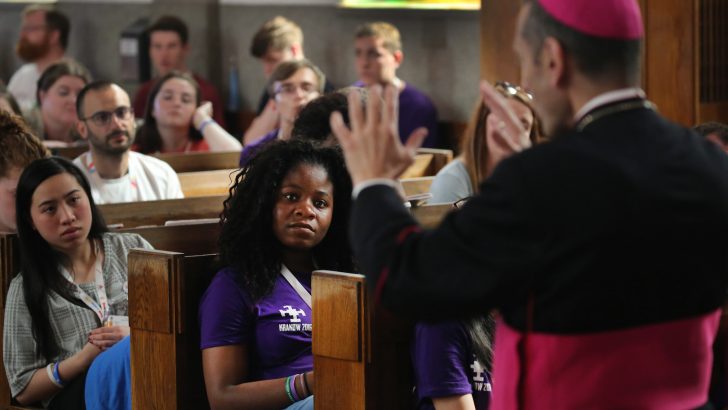As the most recent census indicates, the number of young people today attending Church is in serious decline. Although many still identify as “spiritual”, the Church and its message is one that has been rejected by much of the youth in Ireland. There are, however, various ways in which young people can be drawn back to it.
1. An important problem which needs to be addressed today is the sheer lack of religious and philosophical literacy among the youth. These two subjects have been the cornerstone of Western intellectual thought, and the youth need to be taught that our laws, institutions and art owe their existence to these two subjects.
In my school, we studied early Irish religious history such as monasticism, and also analysed Luke’s Gospel. While both of these topics were interesting, there should be a focus on ethics, objections to Christianity, and existential questions which provoke eager responses such as “Does God exist?”, or “Does life have meaning or do we create it?”
I certainly remember that when questions like these were brought up spontaneously in class, everyone chimed in regardless of their religious convictions. If students don’t know why they’re studying the subject, or if they consider it irrelevant then it will only push them away from it.
2. Another helpful way the Church can draw more young people towards it is by having a bigger presence in schools. Priests shouldn’t just be present in the lives of students at ceremonial occasions but, time permitting, drop in and speak to them.
Personal relationships need to be developed where students see the school chaplain as a friend rather than a distant figure. They have to show children that they’re human, while still showing the glory of the vocation.
One idea I’ve heard before which I think is useful is a question and answer hour, where students sit in a circle and write anonymous questions to the priest who sits in the centre of the group. The questions concern topics about religion such as “What if I don’t believe in God?” or “Why can’t you get married?”. This will educate students on religious matters and allow a more personal bond with the priest to be developed.
3. Attraction towards the Church would also be heightened by introducing more retreats into schools which are peppered with religious themes. Why not let a group of children stay over-night in a monastery or go to religious pilgrimages like Taizé?
These types of initiatives will make a transformative difference for young people, and will also allow priests and vocational directors to discern suitable candidates for the priesthood.
4. If the Church wants to connect with more young people, they have to make their presence more known and available. The Church above all is a community and so should not be identified by the four walls of a parish church.
There should be more free family fun days which parents can bring their children to and so be taught implicitly that the Church has a positive role to play in society. This doesn’t just benefit the children but also parents who will have an integral influence on the values and ideas that children will have.
If parents are ensured that the Church is there to support them and offer help for any worries they may have, then their children are more likely to imbibe that perspective.
5. Another way that the youth could be drawn towards the Church is by making their local church more familiar to them.
One memory which stands out for me in school is when our class went on a tour of our chapel and the parish priest explained the meaning behind the various objects and artefacts.
He even took us to the sacristy, which at our age was a mysterious place where only priests dwelt, akin to the staffroom in schools where students were forbidden.
These are the five main ways I think that the Church can have a more personal presence in the lives of young people which could hopefully bring about rejuvenation.
As Pope Francis said, echoing the example of St Thérèse of Liseux, the Church should be drawing people to Jesus through attraction and not proselytisation.
We should be creating frameworks through education and a more personal presence so that this attraction is made possible, rather than drilling in Sunday Mass attendance with no further substance.
Colm Fitzpatrick is a fourth year theology student at the Loyola Institute in Trinity College Dublin.


 Colm Fitzpatrick
Colm Fitzpatrick Bishop Frank Caggiano of Bridgeport, Connecticut, speaking to young people at World Youth Day in Poland. Photo: CNS
Bishop Frank Caggiano of Bridgeport, Connecticut, speaking to young people at World Youth Day in Poland. Photo: CNS 